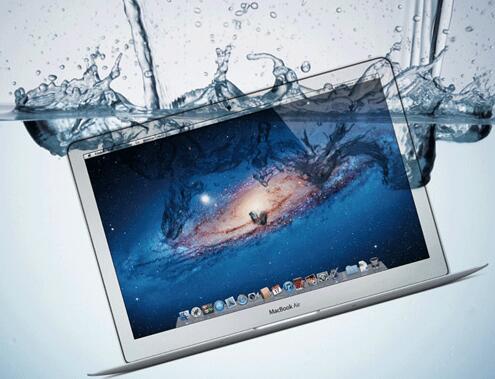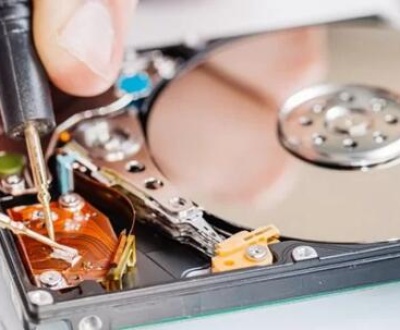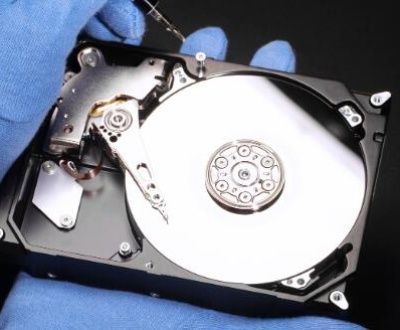Repairing a Samsung SSD for Mac after water damage is a challenging process that often involves a combination of physical hardware restoration and software recovery. Understanding the nuances of solid-state drives (SSDs), especially after exposure to water, is critical for evaluating potential fixes and data recovery options.
1. SSDs and Water Damage
SSDs, unlike traditional hard disk drives (HDDs), do not rely on mechanical parts like spinning platters or moving heads. Instead, they use flash memory to store data, which is typically more durable and less prone to mechanical failure. However, this does not make SSDs immune to water damage. The internal circuitry and microchips that manage data storage can be severely affected by water exposure, especially if there’s power running through the device at the time of the incident.
Water damage to an SSD can disrupt the electrical signals that control data flow, short-circuit vital components, or cause corrosion that leads to long-term failure. Saltwater or dirty water can exacerbate the damage due to impurities, which can cause corrosion to set in faster.

2. Immediate Actions After Water Damage
Power Down the Device The first and most crucial step in dealing with water damage is to turn off the device immediately. If your Mac was running while the water exposure occurred, disconnect it from any power source and remove the SSD (if possible). Continuing to power the device or SSD may worsen the damage by causing short circuits.
Do Not Attempt to Use the Drive Resist the temptation to turn on the SSD or plug it into another machine to check if it works. SSDs are sensitive to power surges after water damage, and trying to power it up prematurely can lead to permanent failure.
Dry the SSD After turning off the device, the next step is to dry the SSD. Use a lint-free cloth to gently dab and absorb any visible moisture on the outside. Do not use heat (e.g., hairdryers or microwaves) to accelerate the drying process, as this can warp or further damage the components. A desiccant (like silica gel) placed in an airtight container with the SSD may help absorb moisture more effectively. Let it dry for at least 48 hours.
3. Assessing Damage and Repairability
Visual Inspection Once the SSD is completely dry, inspect it for any visible signs of corrosion, rust, or burnt components. Look at the connectors and chips for signs of wear or damage. If the drive shows signs of heavy corrosion or burnt spots, the likelihood of easy repair decreases, but there may still be options for data recovery.
Professional Diagnosis At this point, it’s often wise to consult with a professional data recovery service. Water damage can affect multiple components in complex ways that aren’t always visible. Recovery specialists can assess the damage using specialized tools, including magnification devices and multimeters, to check for electrical continuity.
4. Repairing Water Damage
If the SSD is mildly damaged, there are a few potential fixes:
Cleaning Corroded Components
Water can lead to corrosion of the SSD’s contacts and circuitry. A basic cleaning using isopropyl alcohol (99%) can remove corrosion or residue. Gently clean the affected areas using a soft brush. Isopropyl alcohol evaporates quickly and leaves no residue, making it ideal for cleaning electronics.
Component Replacement
In some cases, the damage might be localized to certain components, such as capacitors or resistors, which could potentially be replaced. However, SSDs are highly compact, and replacing individual parts often requires specialized equipment and expertise. If critical components such as the memory controller or NAND flash chips are damaged, repair may not be feasible, but data recovery could still be possible.
5. Data Recovery: If Repair Isn’t Possible
If the SSD cannot be repaired, data recovery becomes the primary goal. Here are a few methods used by professionals:
Chip-Off Data Recovery
In severe cases where the SSD’s controller is irreparably damaged, data recovery professionals may resort to “chip-off” recovery. This involves physically removing the NAND flash chips from the SSD and reading them using specialized equipment. The process is highly technical, as the data stored in the flash memory is often encrypted and spread across multiple chips.
Rebuilding the Controller
Another advanced technique involves replacing or temporarily fixing the SSD controller. If the data on the NAND chips is intact but inaccessible due to controller damage, a new or similar controller can be used to interface with the chips and retrieve the data. This approach requires extensive knowledge of SSD architecture and encryption algorithms, as many SSDs (especially Samsung) use proprietary technology.
Partial Drive Cloning
If the SSD is still somewhat functional but experiences frequent read/write errors due to water damage, a recovery service may attempt to clone the drive bit by bit. This process involves making an exact replica of the drive’s contents, including damaged or corrupt sectors, onto a new drive. Once the clone is created, recovery software can be used to reconstruct and retrieve the usable data.
6. Software-Based Data Recovery on Mac
For less severe cases of water damage where the SSD is still recognized by the system but has issues accessing data, software-based recovery solutions may work. There are several tools designed for macOS that can help recover data from damaged SSDs:
Disk Utility First Aid
Apple’s Disk Utility has a built-in feature called First Aid, which scans and repairs minor disk issues. This tool can be accessed by booting into macOS Recovery mode and selecting Disk Utility. It’s a first line of defense for relatively minor SSD problems, though it is not effective for extensive physical damage.
Third-Party Data Recovery Software
If Disk Utility cannot repair the drive, you can turn to more robust third-party recovery solutions like:
Disk Drill
Data Rescue
EaseUS Data Recovery Wizard
These programs are capable of scanning damaged or inaccessible drives to recover files, even if the drive has been corrupted or has logical errors.
7. Preventive Measures for the Future
While accidents can happen, there are steps you can take to mitigate future risks to your SSD, especially for water damage:
Water-Resistant External Cases If your SSD is used as an external drive, consider using a water-resistant or waterproof enclosure. These cases are designed to protect the internal circuitry from environmental damage.
Backup Data Regularly Frequent backups are essential to minimize data loss. Utilize macOS’s built-in Time Machine feature to create automatic backups, or use cloud-based solutions such as iCloud or Google Drive.
Unplug External Drives When Not in Use For external SSDs, always unplug the device when it’s not actively being used. This reduces the risk of electrical damage during incidents like water exposure.
About us and this blog
Panda Assistant is built on the latest data recovery algorithms, ensuring that no file is too damaged, too lost, or too corrupted to be recovered.
Request a free quote
We believe that data recovery shouldn’t be a daunting task. That’s why we’ve designed Panda Assistant to be as easy to use as it is powerful. With a few clicks, you can initiate a scan, preview recoverable files, and restore your data all within a matter of minutes.
Subscribe to our newsletter!
More from our blog
See all postsRecent Posts
- Data recovery salt lake city utah 2025-04-18
- Data recovery sacramento 2025-04-18
- Data recovery miami 2025-04-18

 Try lt Free
Try lt Free Recovery success rate of up to
Recovery success rate of up to









